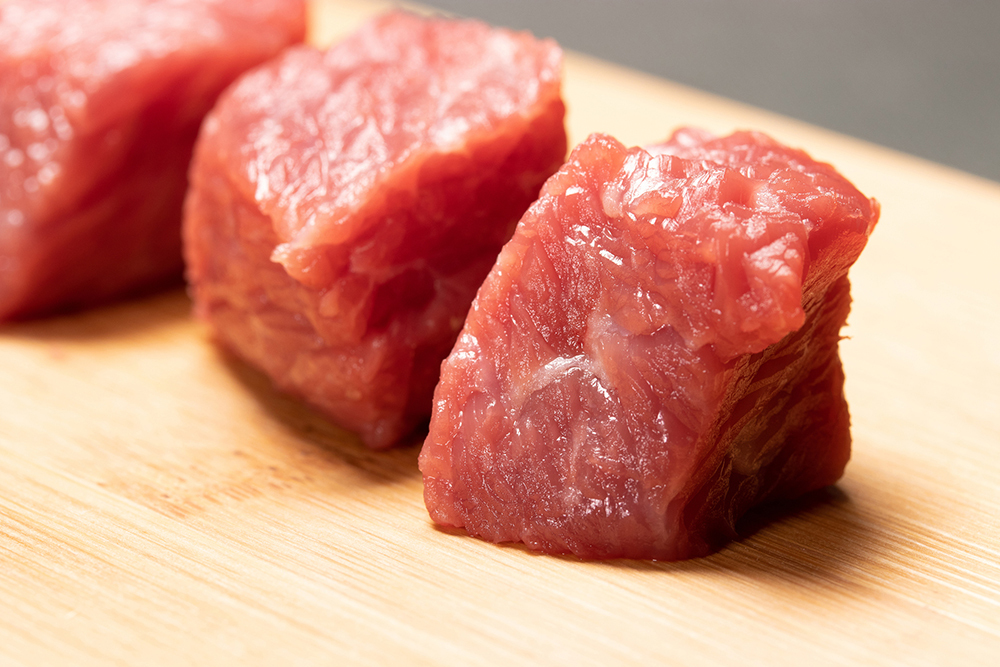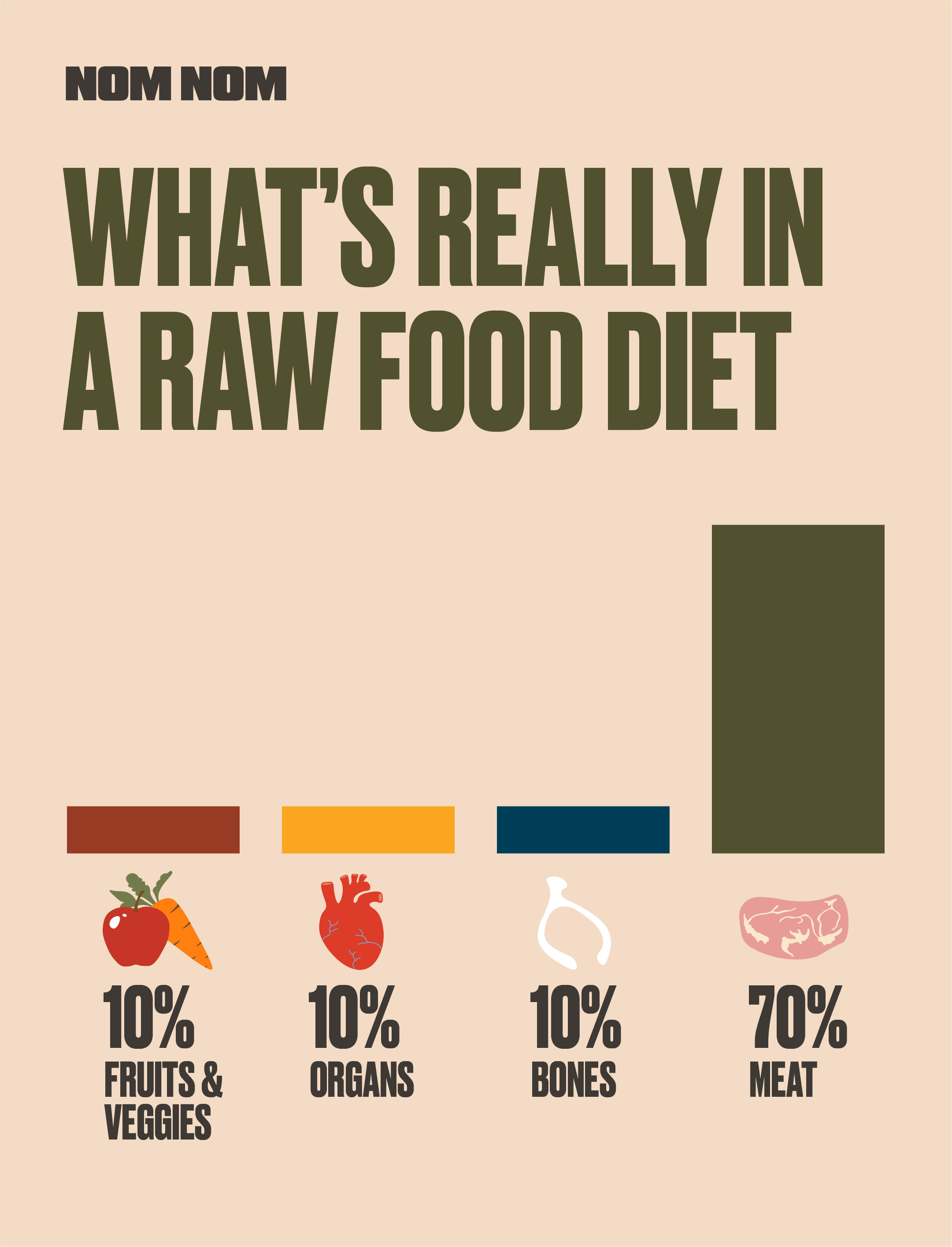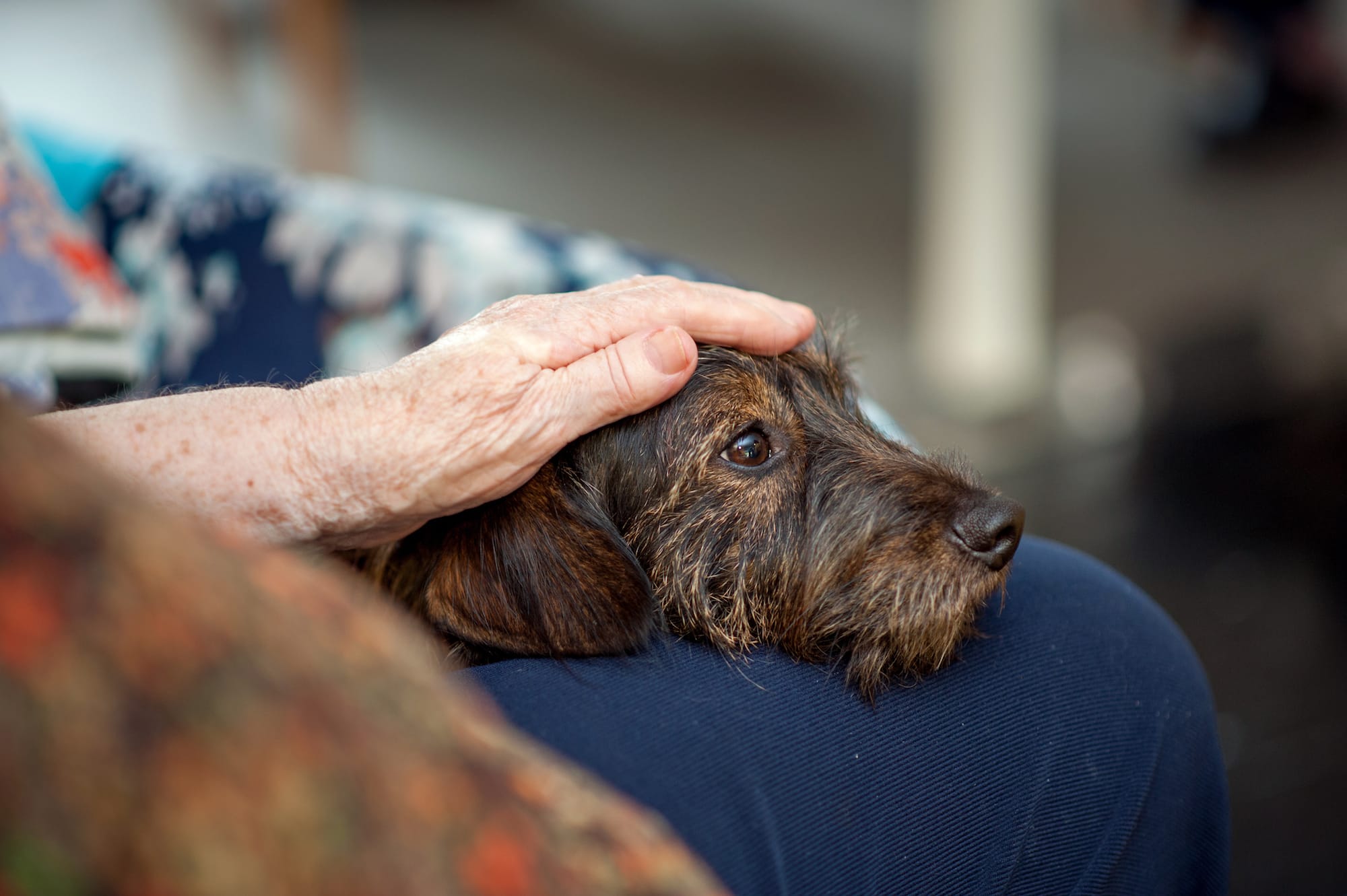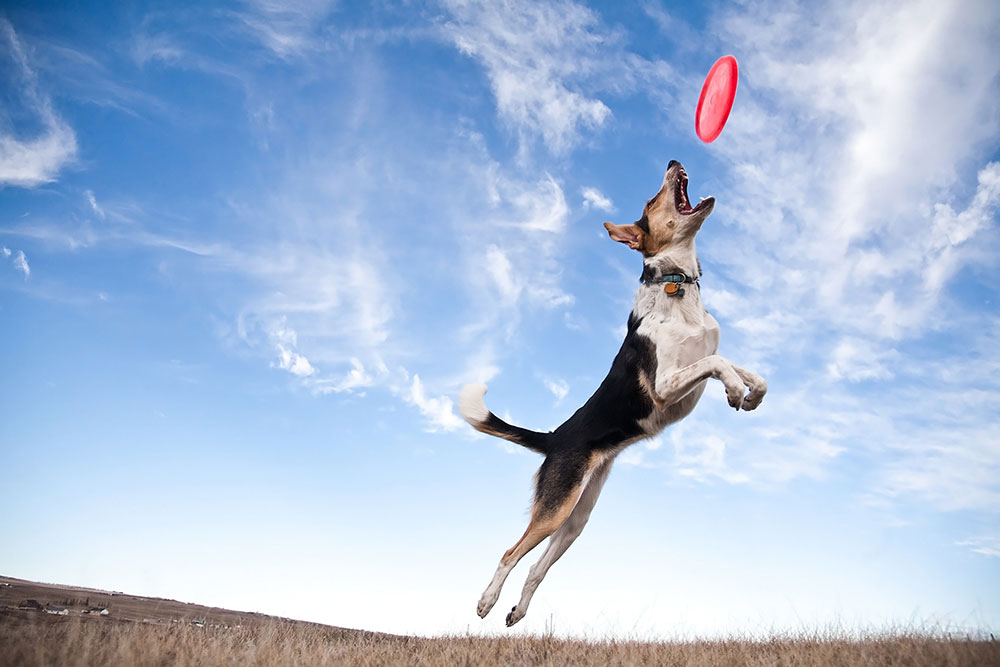Learn : Food & Nutrition
What is a Raw Food Diet for Dogs?
As the name alludes, a raw food diet contains raw or uncooked ingredients. As opposed to a fresh diet, where ingredients are lightly cooked, or a dry-food kibble diet, where ingredients are processed and extruded into pellets.
Raw diets are trendy and controversial. Advocates often claim them as being more natural and having clear health benefits. Critics argue raw diets risk contamination and can be nutritionally inadequate and unbalanced.
Let’s dive a little deeper into both sides.
Ingredients in a raw food diet
Raw food diets tend to be heavily meat-based, although several do contain a small portion of uncooked plant-based ingredients too.
Because these diets often seek to mimic a “wild” diet — the ingredient list often extends to include bones and organs, sourcing meat from both traditional livestock to more game animals.
Commercially, raw food diets are formulated to meet AAFCO nutrient profiles, and are frequently ground then frozen or freeze-dried prior to consumption. But home-prepared raw diets are also a common trend.
Supporting arguments
Proponents of raw-food diets, like the BARF® diet, claim that feeding raw is better for your dog's:
- Overall health and immune system
- Skin and coat
- Dental hygiene
- Weight management
- Bowel movements
Scientific evidence backs some benefits of raw food diets for dog’s gut health and stool quality. These effects are similar to those of a fresh diet. The diets are also very high in fat, and it’s known that diets high in fat can help the skin barrier and produce a shinier coat.
However, at this point most other health-claims are anecdotal and have yet to have strong support from the scientific community. Anecdotal evidence comes from observations and while it’s inconclusive, it is not without value.
Counter evidence
These diets have been found to have several risks associated with feeding, notably:
- Nutritional inadequacy
- Contamination
Some raw food diets have been found to be marketed without undergoing robust nutritional testing. Despite being formulated to meet nutritional pet food standards, commercial raw food diets often have highly variable nutrient levels which makes sense given the types of ingredients used, and homemade raw diets pose a very real risk of nutritional insufficiency.
The calcium and phosphorus levels in particular have been shown to be highly inconsistent, which may be due to the inclusion of ground bone. Bone fragments also pose additional risks such as internal cuts and tooth injuries if not ground into small pieces.
Contamination from many sources have been detected across numerous raw food brands. In particular, contamination from disease-causing bacteria like Salmonella and E. coli have been frequently found — putting dogs consuming raw-food diets at risk of foodborne illnesses. Recently, however, some companies have started using pasteurization to minimize the risk of pathogens — some raw food purists think this is equivalent to cooking, but new technology applies high pressure and low temperatures.
The reality
A survey from 2019 found that owners that chose to feed their dogs raw diets were not informed about the associated risks, often did not consult their veterinarian, and were motivated by the prospect of a more natural diet for the health of their dog.
The fact is that domesticated dogs, compared to their wild ancestors, have adapted and have a greater ability to digest carbohydrates and truly benefit from the inclusion of plant-based ingredients, that so many raw diets heavily limit.
For or against, a raw-meat diet may not be appropriate for all dogs, especially those with certain medical conditions.
Feed raw safely
Every dog is different, and if you’ve seen the benefits a raw meat diet has for your dog, then just be sure you're taking the steps to make sure their diet is balanced and safe.
- For commercially prepared raw diets:
- Consult a veterinarian for brand recommendations and consider companies with veterinary nutritionists on staff and with nutritional testing available
- Look for companies with rigorous sanitation practices and quality testing
- Try pasteurized raw diets to reduce bacterial contamination risks
- For home-prepared raw diets:
- Consult a veterinarian for formulation advice, and possible supplement blends to add
- Purchase high-quality ingredients
- Handle and store safely for your health and your dogs
For those dog owners looking to move away from traditional heavily processed dog foods, but not sure about the associated risks of feeding a raw food diet, a fresh diet may be something to consider (not that we’re biased). The mild cooking of ingredients not only increases food safety but can also increase your dog’s ability to harness and use all available nutrition.




 Senior Dog Food
Senior Dog Food
 Cannabidiol (CBD) for Dogs - The Basics
Cannabidiol (CBD) for Dogs - The Basics